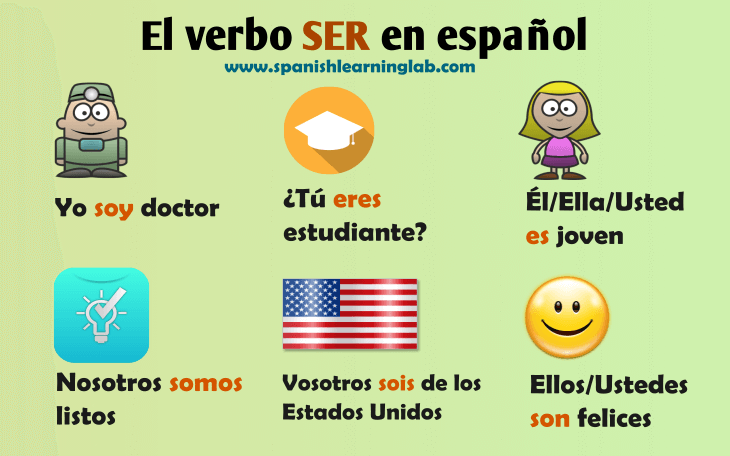 sentences using SER in Spanish" width="730" height="456" />
sentences using SER in Spanish" width="730" height="456" />As we have seen in previous lessons, the verb to be in Spanish has two forms: SER and ESTAR. Both of them are irregular verbs. In this lesson, we will learn to conjugate SER for all personal pronouns, and more importantly, how to make sentences using SER in Spanish to talk about different situations in the present tense. This lesson includes several nice resources for you to see the verb in use and practice activities too.
We will begin the lesson with a short video explaining the basics about both SER and ESTAR. The video includes several examples of situations in which we might use them. This video is also part of our lesson about ESTAR, so if you have studied that lesson before, then many things will make more sense now. Pay attention to the examples in the video and the main differences between both verbs.
 sentences using SER in Spanish" width="730" height="456" />
sentences using SER in Spanish" width="730" height="456" />
SER is normally used in many topics including physical descriptions, to describe houses, to talk about clothes, to say what the weather is like and many other purposes. Most of the time, sentences with SER will use the form ES to describe a single object and SON for several. The main difference between both SER and ESTAR is that SER describes things that will not change easily over time or that never change at all wheras ESTAR describes temporary states, for example:
As you can see in the examples, SER is used with adjectives to describe something. ESTAR has the same use when talking about conditions that will change soon, for example: “El clima está frío”. This last example means that the weather is cold today, but maybe it has been warm in the past few days. Here are some sentences using SER for descriptions in Spanish